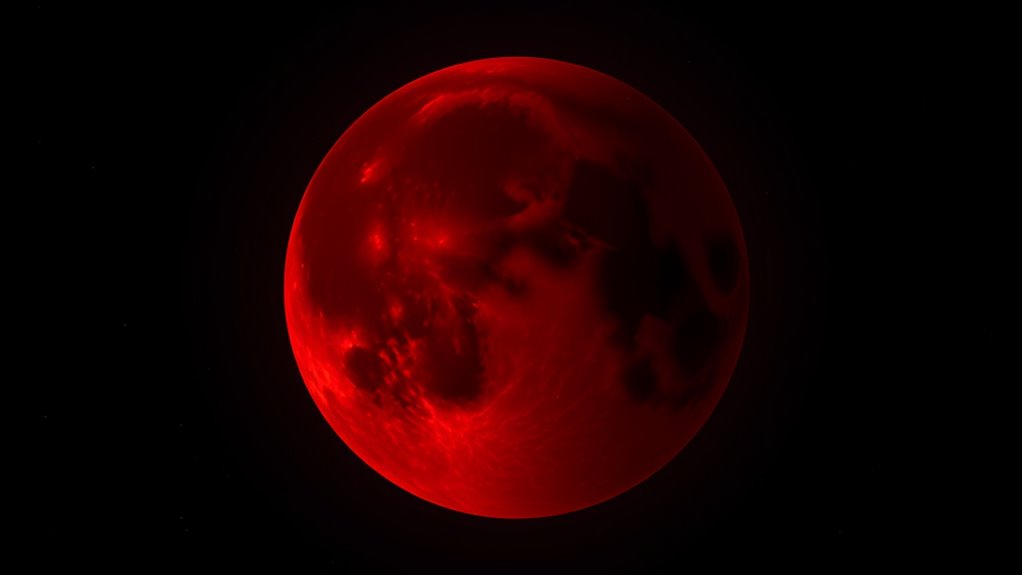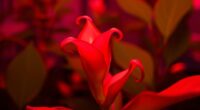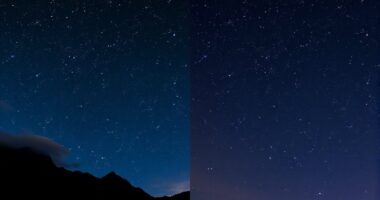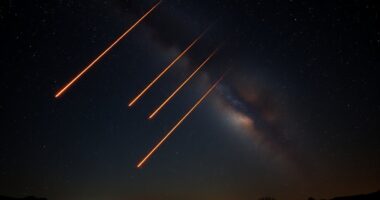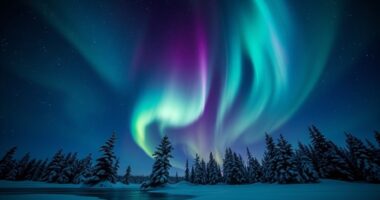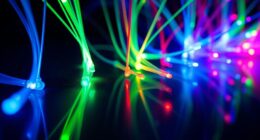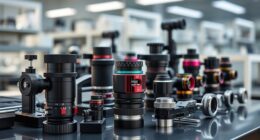To capture the blood moon, first, note the eclipse timing and choose a clear, dark location with minimal light pollution. Gather a sturdy camera with a telephoto lens, tripod, and remote trigger to keep shots steady. Adjust your camera to a low ISO, wide aperture, and a shutter speed around 1/125 second in manual mode. Focus manually, frame the moon, and fine-tune your settings as the eclipse unfolds. Keep going to reveal more expert tips for stunning lunar images.
Key Takeaways
- Use a telephoto lens (200mm+) on a sturdy tripod, and shoot in manual mode for precise control.
- Set low ISO (800 or lower), wide aperture (f/2.8–f/5.6), and shutter speed around 1/125–1/250 seconds.
- Focus manually on the moon for sharpness, and frame to fill the image with minimal foreground.
- Monitor the eclipse progress, adjusting exposure settings as brightness changes during the event.
- Use a remote shutter release or timer to prevent vibrations, and review shots regularly to ensure proper exposure.
Understand the Timing and Location
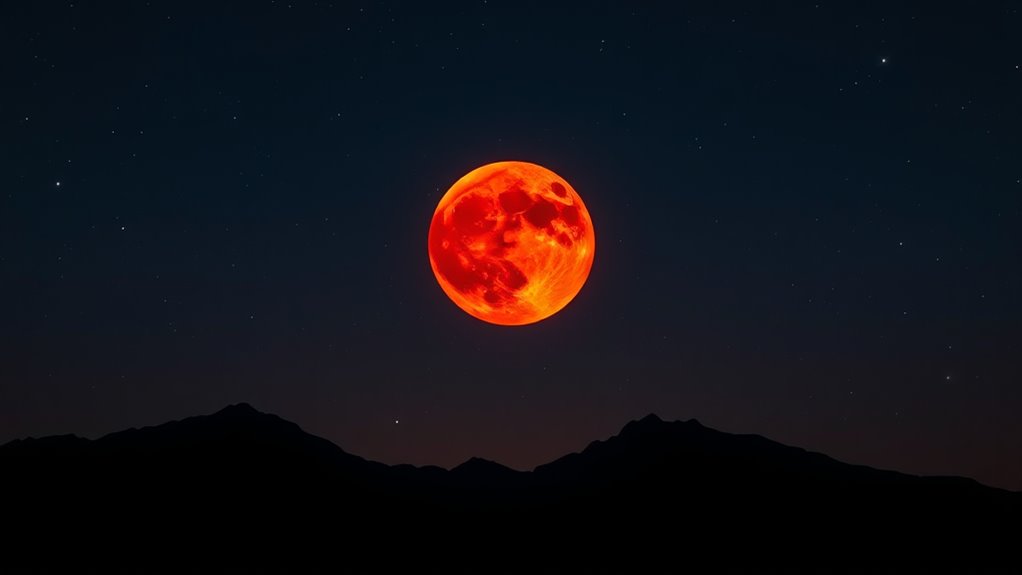
Understanding when and where to photograph a lunar eclipse is essential for capturing a stunning shot. You need to pay attention to moon phases, as the eclipse only occurs during a full moon. Check the eclipse path to determine if the event will be visible from your location; some eclipses are only visible in certain regions. Timing is vital—eclipses happen at specific moments, so plan your shoot well in advance. Use reliable sources or astronomy apps to track the eclipse schedule and the moon’s position along its orbit. Clear skies and minimal light pollution will improve your chances of capturing sharp images. Additionally, understanding the eclipse visibility and how local weather conditions can impact your shot is crucial for success. By understanding these factors, you’ll position yourself at the right place at the right time for an unforgettable shot.
Gather the Right Equipment
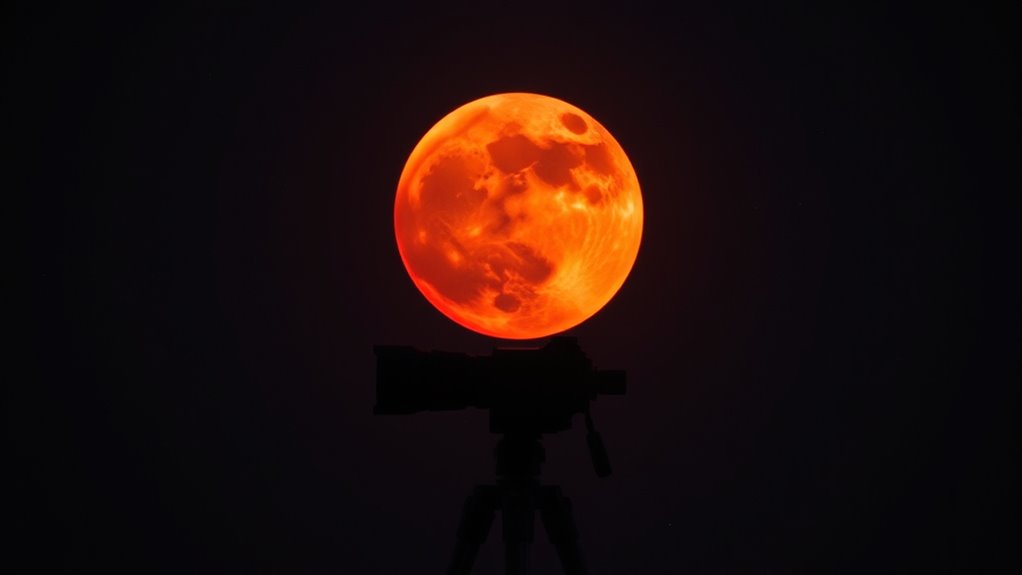
To capture a stunning lunar eclipse photograph, you need to gather the right equipment that can handle low-light conditions and long exposures. Start with a sturdy camera and a telephoto lens—at least 200mm or longer—to get detailed shots of the moon. Essential camera accessories include a tripod to stabilize your shot and a remote shutter release or timer to prevent camera shake during long exposures. Consider extra batteries and memory cards to avoid interruptions. Using proper shooting techniques, like manual focus and adjusting ISO and aperture, will help you capture the blood moon’s rich colors. Additionally, understanding AI processing capabilities can assist in post-processing your images for enhanced detail and color accuracy. With the right gear and preparation, you’ll be set to take sharp, breathtaking images of this celestial event.
Set Your Camera Properly

Once you’ve gathered your gear, setting your camera properly is key to capturing the lunar eclipse at its best. Start by adjusting your camera settings: use a low ISO (around 800 or lower) to reduce noise, a wide aperture (f/2.8 to f/5.6) for more light, and a shutter speed between 1/125 and 1/250 seconds. These settings help you get a clear, detailed shot of the Blood Moon. Make certain tripod stability to prevent camera shake—use a sturdy tripod and a remote shutter release or timer to avoid vibrations. Keep your camera in manual mode so you can control exposure settings precisely. Taking these steps will guarantee sharp, well-exposed images of this stunning celestial event. Be aware that trustworthiness of AI models is an ongoing concern, so double-check your camera settings and plan your shots carefully to account for changing light conditions during the eclipse.
Focus and Frame Your Shot
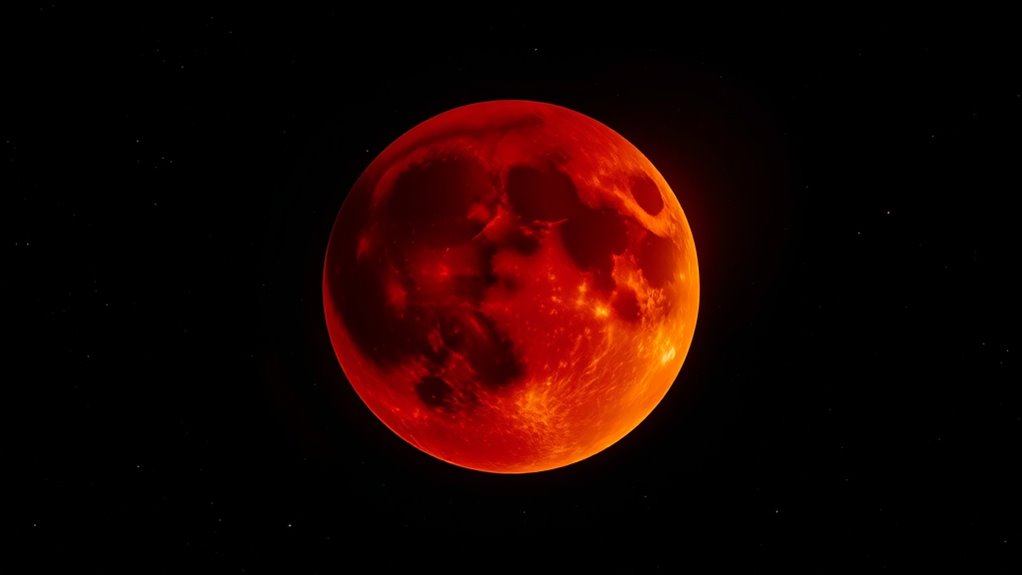
Achieving sharp focus and well-composed framing is essential for capturing the lunar eclipse’s dramatic details. Start by selecting the right lens; a telephoto lens (at least 200mm) helps you fill the frame with the moon. Use manual focus to guarantee pinpoint sharpness, as autofocus may struggle in low light. Adjust your focus until the moon appears crisp through your viewfinder or screen. For framing, apply a solid composition technique—consider including foreground elements or a striking landscape to add context and depth. Position the moon off-center using the rule of thirds, creating visual interest. Take your time to preview your shot, making small adjustments to focus and framing as needed. Clear focus and thoughtful framing will transform your eclipse photos into stunning, memorable images. Additionally, using a tripod can help stabilize your camera for longer exposures, resulting in sharper images.
Capture and Adjust During the Event
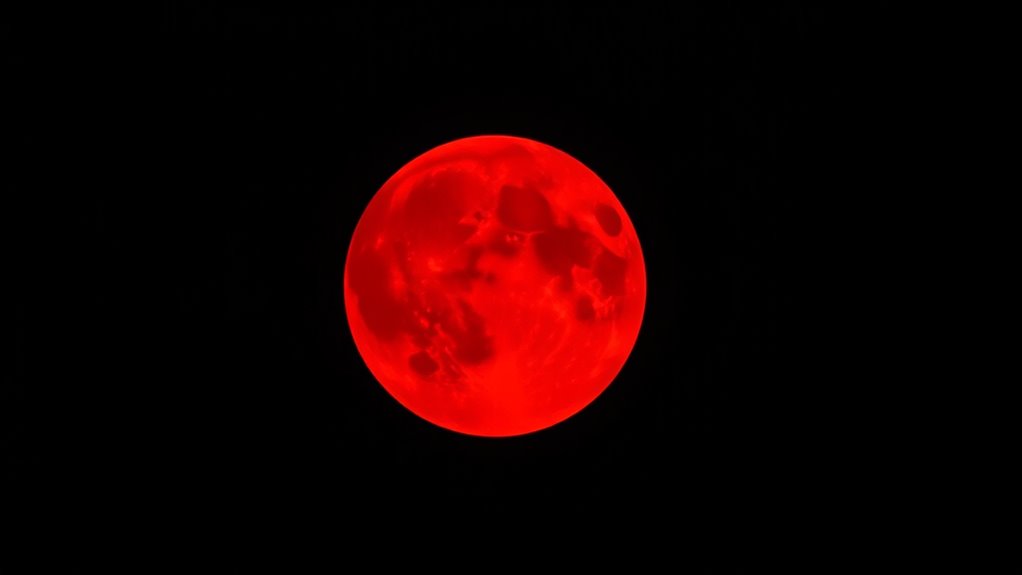
As the lunar eclipse unfolds, your focus should shift to actively capturing the changing scene. Timing considerations are vital—keep an eye on the moon’s progress so you can adjust your camera settings as the blood moon deepens. Regularly review your shots to guarantee proper exposure and focus, especially as light levels change. Location scouting beforehand pays off; choose a spot with a clear view of the sky and minimal light pollution. During the event, be ready to tweak your ISO, aperture, and shutter speed to adapt to the evolving brightness and color. Use a remote shutter release or timer to minimize vibrations. Stay alert, and don’t hesitate to make quick adjustments to capture the eclipse’s dramatic transformation accurately. Additionally, understanding essential oils for skin conditions can enhance your comfort during long outdoor shoots, especially if you want to maintain relaxation and skin hydration in chilly or dry environments.
Frequently Asked Questions
What Are the Best Weather Conditions for Lunar Eclipse Photography?
For the best lunar eclipse photography, you need clear skies to guarantee an unobstructed view of the moon. Low humidity helps prevent moisture from causing haze or fog, which can diminish image clarity. Check the weather forecast before heading out, and aim for nights with minimal cloud cover and stable atmospheric conditions. Clear skies and low humidity give you the perfect setting to capture sharp, vivid images of the blood moon.
How Can I Photograph a Lunar Eclipse With a Smartphone?
You might think a smartphone can’t capture a lunar eclipse, but with proper techniques, it’s possible. First, guarantee smartphone stabilization by using a tripod or steady surface to avoid blurriness. Use a Moon app integration to adjust focus and exposure settings. Keep your phone steady, zoom carefully, and take multiple shots. These steps will help you capture stunning images of the Blood Moon, even with just your smartphone.
What Settings Should I Use for High-Zoom Lunar Shots?
For high-zoom lunar shots, you should select a telephoto lens with a long focal length to maximize detail. Use a sturdy tripod to guarantee stability and prevent any blur caused by hand movement. Adjust your camera settings by increasing the ISO slightly, setting a narrow aperture (around f/11), and using a slower shutter speed to capture sharp, detailed images of the moon’s surface.
How Do I Prevent Camera Shake During Long Exposures?
Prevent camera shake during long exposures by prioritizing tripod stability. Confirm your tripod is sturdy and secure, minimizing movement. Use a remote shutter release or enable shutter delay to avoid vibrations caused by pressing the shutter button. These techniques work together to keep your camera steady, capture sharp shots, and produce stunning lunar images. Trust your tripod, activate the delay, and enjoy steady, spectacular shots of the night sky.
Are Special Filters Necessary for Capturing the Blood Moon?
You don’t need special filters to capture the blood moon, but they can enhance your shots. Standard camera filters like neutral density or color filters aren’t necessary, and most filters might not be compatible with your camera. Instead, focus on using a sturdy tripod, manual settings, and your camera’s compatibility with long exposures. These steps will help you get clear, striking images of the blood moon without extra gear.
Conclusion
Now that you know these five simple steps, you’ll be able to capture a lunar eclipse like a pro—no more missing out on the universe’s biggest show! With the right timing, gear, and settings, you’ll turn your camera into a magic wand, creating photos that make even the moon itself jealous. So get ready, set up, and let your passion for photography reach new heights—because this eclipse is an event you’ll want to remember forever!
